Intel Core i7 3960X (Sandy Bridge E) Review: Keeping the High End Alive
by Anand Lal Shimpi on November 14, 2011 3:01 AM EST- Posted in
- CPUs
- Intel
- Core i7
- Sandy Bridge
- Sandy Bridge E
No Integrated Graphics, No Quick Sync
All of this growth in die area comes at the expense of one of Sandy Bridge's greatest assets: its integrated graphics core. SNB-E features no on-die GPU, and as a result it does not feature Quick Sync either. Remember that Quick Sync leverages the GPU's shader array to accelerate some of the transcode pipe, without its presence on SNB-E there's no Quick Sync.
Given the target market for SNB-E's die donor (Xeon servers), further increasing the die area by including an on-die GPU doesn't seem to make sense. Unfortunately desktop users suffer as you lose a very efficient way to transcode videos. Intel argues that you do have more cores to chew through frames with, but the fact remains that Quick Sync frees up your cores to do other things while SNB-E requires that they're all tied up in (quickly) transcoding video. If you don't run any Quick Sync enabled transcoding applications, you won't miss the feature on SNB-E. If you do however, this will be a tradeoff you'll have to come to terms with.
Tons of PCIe and Memory Bandwidth
Occupying the die area where the GPU would normally be is SNB-E's new memory controller. While its predecessor featured a fairly standard dual-channel DDR3 memory controller, SNB-E features four 64-bit DDR3 memory channels. With a single DDR3 DIMM per channel Intel officially supports speeds of up to DDR3-1600, with two DIMMs per channel the max official speed drops to 1333MHz.
With a quad-channel memory controller you'll have to install DIMMs four at a time to take full advantage of the bandwidth. In response, memory vendors are selling 4 and 8 DIMM kits specifically for SNB-E systems. Most high-end X79 motherboards feature 8 DIMM slots (2 per channel). Just as with previous architectures, installing fewer DIMMs is possible, it simply reduces the peak available memory bandwidth.
Intel increased bandwidth on the other side of the chip as well. A single SNB-E CPU features 40 PCIe lanes that are compliant with rev 3.0 of the PCI Express Base Specification (aka PCIe 3.0). With no PCIe 3.0 GPUs available (yet) to test and validate the interface, Intel lists PCIe 3.0 support in the chip's datasheet but is publicly guaranteeing PCIe 2.0 speeds. Intel does add that some PCIe devices may be able to operate at Gen 3 speeds, but we'll have to wait and see once those devices hit the market.
The PCIe lanes off the CPU are quite configurable as you can see from the diagram above. Users running dual-GPU setups can enjoy the fact that both GPUs will have a full x16 interface to SNB-E (vs x8 in SNB). If you're looking for this to deliver a tangible performance increase, you'll be disappointed:
| Multi GPU Scaling - Radeon HD 5870 CF | |||||
| Max Quality, 4X AA/16X AF | Metro 2033 (19x12) | Crysis: Warhead (19x12) | Crysis: Warhead (25x16) | ||
| Intel Core i7 3960X (2 x16) | 1.87x | 1.80x | 1.90x | ||
| Intel Core i7 2600K (2 x8) | 1.94x | 1.80x | 1.88x | ||
Modern GPUs don't lose much performance in games, even at high quality settings, when going from a x16 to a x8 slot.
I tested PCIe performance with an OCZ Z-Drive R4 PCIe SSD to ensure nothing was lost in the move to the new architecture. Compared to X58, I saw no real deltas in transfers to/from the Z-Drive R4:
| PCI Express Performance - OCZ Z-Drive R4, Large Block Sequential Speed - ATTO | ||||
| Intel X58 | Intel X79 | |||
| Read | 2.62 GB/s | 2.66 GB/s | ||
| Write | 2.49 GB/s | 2.50 GB/s | ||
The Letdown: No SAS, No Native USB 3.0
Intel's current RST (Rapid Story Technology) drivers don't support X79, however Intel's RSTe (for enterprise) 3.0 will support the platform once available. We got our hands on an engineering build of the software, which identifies the X79's SATA controller as an Intel C600:
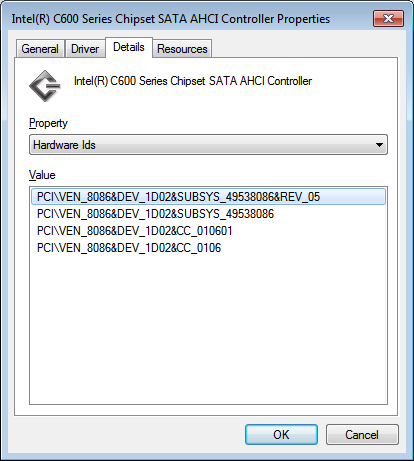
Intel's enterprise chipsets use the Cxxx nomenclature, so this label makes sense. A quick look at Intel's RSTe readme tells us a little more about Intel's C600 controller:
SCU Controllers:
- Intel(R) C600 series chipset SAS RAID (SATA mode)
Controller
- Intel C600 series chipset SAS RAID ControllerSATA RAID Controllers:
- Intel(R) C600 series chipset SATA RAID ControllerSATA AHCI Controllers:
- Intel(R) C600 series chipset SATA AHCI Controller
As was originally rumored, X79 was supposed to support both SATA and SAS. Issues with the implementation of the latter forced Intel to kill SAS support and go with the same 4+2 3Gbps/6Gbps SATA implementation 6-series chipset users get. I would've at least liked to have had more 6Gbps SATA ports. It's quite disappointing to see Intel's flagship chipset lacking feature parity with AMD's year-old 8-series chipsets.
I ran a sanity test on Intel's X79 against some of our H67 data for SATA performance with a Crucial m4 SSD. It looks like 6Gbps SATA performance is identical to the mainstream Sandy Bridge platform:
| 6Gbps SATA Performance - Crucial m4 256GB (FW0009) | ||||||
| 4KB Random Write (8GB LBA, QD32) | 4KB Random Read (100% LBA, QD3) | 128KB Sequential Write | 128KB Sequential Read | |||
| Intel X79 | 231.4 MB/s | 57.6 MB/s | 273.3 MB/s | 381.7 MB/s | ||
| Intel Z68 | 234.0 MB/s | 59.0 MB/s | 269.7 MB/s | 372.1 MB/s | ||
Intel still hasn't delivered an integrated USB 3.0 controller in X79. Motherboard manufacturers will continue to use 3rd party solutions to enable USB 3.0 support.


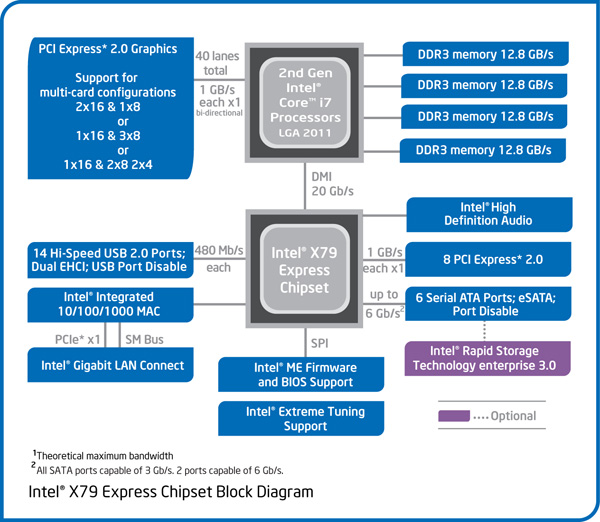
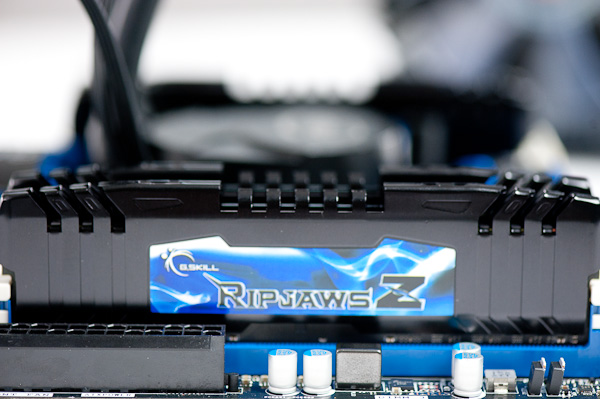
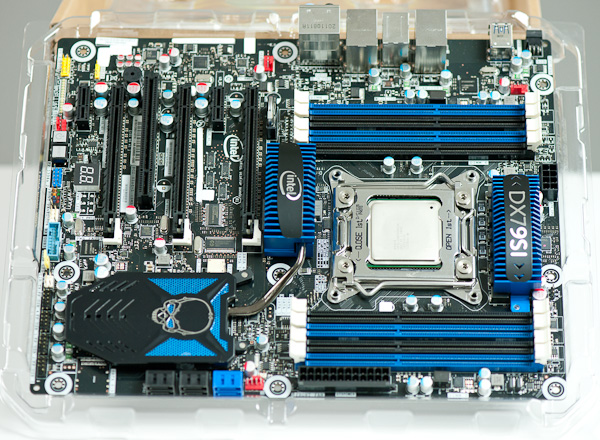
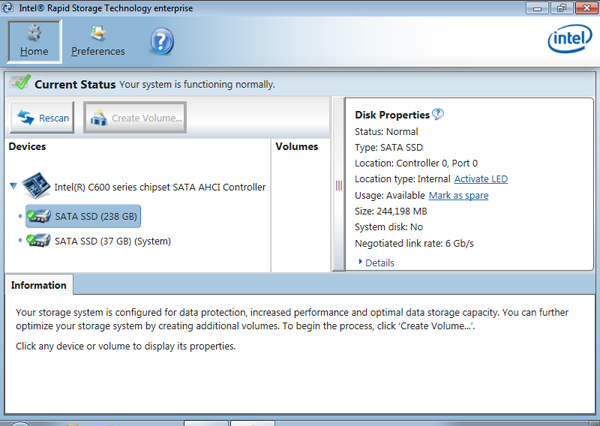








163 Comments
View All Comments
ggathagan - Monday, November 14, 2011 - link
You assume correctly.As stated in the article, the 3820 is due out early next year and expected to run at about $300.
If you look at the 1st page of the article, you'll note that the 3820 is a little faster than the 2700K, with the same max in turbo mode and a larger L3 cache.
DanNeely - Monday, November 14, 2011 - link
Except that the 2700k is unlocked and the 3820 has a severe overclocking limit.theangryintern - Monday, November 14, 2011 - link
Thanks for the great review, Anand. I had been waiting for SNB-E to do an upgrade from my X58 Core i7, but now I'm thinking of saving some money and going with a regular Sandy Bridge, the gaming gains just aren't enough to justify the added expense.Makaveli - Monday, November 14, 2011 - link
That makes no sense there are no gaming games going from X58 to SB!You will still be GPU bottlenecked on most games!
And a whole new build will be an added expense for no gain in Games!
Beenthere - Monday, November 14, 2011 - link
Not much to see here except over-priced CPUs and mobos. Nice to see Intel fans smartening up and passing on these cash cows.Lazlo Panaflex - Monday, November 14, 2011 - link
Hi Anand, thanks for the review :)Apologize in advance if this was asked earlier, but what specifically is your criteria for determining a stable overclock? For example, do you run Prime95, large FFT's for a predetermined period of time, or perhaps IBT (Intel Burn Test) for a certain amount of runs? Or do you utilize some other tool? Just curious, since this question often pops up in the CPU forums, and everyone has their own opinion of what constitutes a stable overclock.
Regards,
LP
yankeeDDL - Monday, November 14, 2011 - link
LOL. Supply and the mand is the cause. Jacking up the price is the effect. You are a bit mixed up it seems.Also, in the consumer market having the fastest CPU (or GPU) that you sell for a ridiculous price doesn't mean that someone buys it.
How many people buy a HD6990? Few, and that's why supplies are so scarce.
The 3960X is a "show off" chip that claims performance crown. Anyone in the right state of mind will not buy it: it is just not worth the money it costs, unless you're in absolute need of few extra % of performance.
JlHADJOE - Tuesday, November 15, 2011 - link
We have chips priced at $1000 because the market has shown that it is willing to pay that amount to get the top-performing chip. It doesn't matter that AMD doesn't have an entry in that segment, because if it did, then we'd probably have AMD's FX-9300 or something priced at $900, while Intel sells their 3960X at $1100.This was the exact case when AMD was competitive, and their FX-57 was sold at $1100, vs Intel's Pentium EE which was going for $999. Was there a competitive AMD at the time? Yes. They were even in the lead. Were prices still jacked up? Yes.
The $1000 CPU will only go away if we, as consumers wise up and say we are not willing to pay that much money for a chip.
karkas - Monday, November 14, 2011 - link
Rapid STORY Technology?GTVic - Monday, November 14, 2011 - link
Lack of Quick Sync is not nearly the negative that the reviewer seems to think it is. It is not a well supported technology and not many people would use it on a day to day basis. This shouldn't even be mentioned in the article unless you also want to bring up support for Intel Viiv http://en.wikipedia.org/wiki/Intel_Viiv.